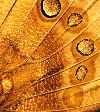|
|
|
|
 |
DISTANT WORLDS
AND BUTTERFLY WINGS
The mission of the National Science Foundation
is to promote progress in science and
engineering research and education in
the United States. It is the only federal
agency whose mandate encompasses science
and engineering research and education
at all levels and across all fields. Its
field of activity extends from butterfly
wings to the distant galaxies being scanned
for signs of life by NSF-funded radio
telescopes. (In fact, NSF-funded observatories
helped discover ten new planets outside
of our own solar system.)
|
 |
PROGRESSING
GEOMETRICALLY
Computer visualization techniques are
widely used to predict weather patterns,
assist surgeons, design buildings, and
produce TV graphics—among literally thousands
of other applications. All have been pioneered
with NSF support.
|
 |
FROM BINARY
CODE TO DOT.COM
“Where Discoveries Begin” is the theme
of NSF’s 50th anniversary celebration.
Sometimes the real-world applications
with the widest impact come not from what
NSF-funded researchers discover, but how
they go about doing it. The Internet had
its germination in government-funded networking
efforts including the National Science
Foundation’s NSFNET. NSF research also
was instrumental in the development of
Mosaic, the World Wide Web browser and
forerunner to Netscape that popularized
the Web.
|
 |
EFFICIENCY
THAT’S NOT AN OPTICAL ILLUSION
Fiber optics—the transmission of data
by light pulses through very thin glass
fibers—have turned traditional conceptions
of data transmission upside down. Optical
fibers can carry vast amounts of data,
but are much smaller and lighter than
conventional copper cables. NSF has played
a role in research that refines and extends
the basic technology of fiber optics to
improve its abilities, and also has supported
the development of basic communications
theory, which is used to design and implement
communications systems based on this technology.
|
 |
INCREDIBLE
SHRINKING MACHINES
Microelectromechanical systems, also known
as MEMS, are at the heart of new, high
tech devices ranging from fighter aircraft
to printers. MEMS engineers combine miniaturization,
multiple components, and microelectronics
to produce the world's smallest motors,
switches, and circuits. Measured in microns,
MEMS machines are so small they're invisible
to the human eye. NSF funded early development
work on MEMS, including research in microscale
phenomena, manufacturing processes, and
applications. This work, in turn, has
fueled the current multibillion dollar
MEMS industry.
|
 |
DISCOVERING
SCIENCE AT THE SOURCE
An active vent on Kilauea Volcano in Hawaii
shot at dawn in December, 1986. Science
does not confine itself to laboratories
and research institutions. It is happening
all around us in dramatic and sometimes
mysterious ways. NSF-funded researchers
can be found working in every kind of
environment—from the streets of large
cities to remote outposts in Antarctica,
from the depths of the ocean to mountaintop
observatories.
|
 |
A WINDOW ON
THE FUTURE
Investing in leading-edge research and
education is a well-calculated risk—and
a bet on our future. Over the past fifty
years, it has paid extraordinary dividends.
According to economists, up to half of
U.S. economic growth during this latter
part of the 20th century has stemmed from
technology and the science that supports
it. In the 21st century, investing in
education, science, and technology will
be more important—and will serve our society
in more fundamentally critical ways—than
ever before.
|
 |
SEEING FARTHER
For 40 years, NSF has provided U.S. and
international astronomers access to several
world-class observatories. NSF supports
three national astronomy centers—the National
Optical Astronomy Observatories, the National
Radio Astronomy Observatory, and the National
Astronomy and Ionosphere CenterŃthat operate
large optical and radio telescopes and
radar facilities. Research in ground-based
optical, infrared, radio and radar astronomy
and solar physics is conducted in facilities
such as a 4-meter optical telescope on
Arizona’s Kitt Peak, the 10 separate antennae
of the Very-Long-Baseline Array spaced
across the country, and solar telescopes
on Kitt Peak and on Sacramento Peak in
New Mexico. Virtually every branch of
contemporary astronomy has been advanced
by the national telescope facilities.
|
|
|
|
|

